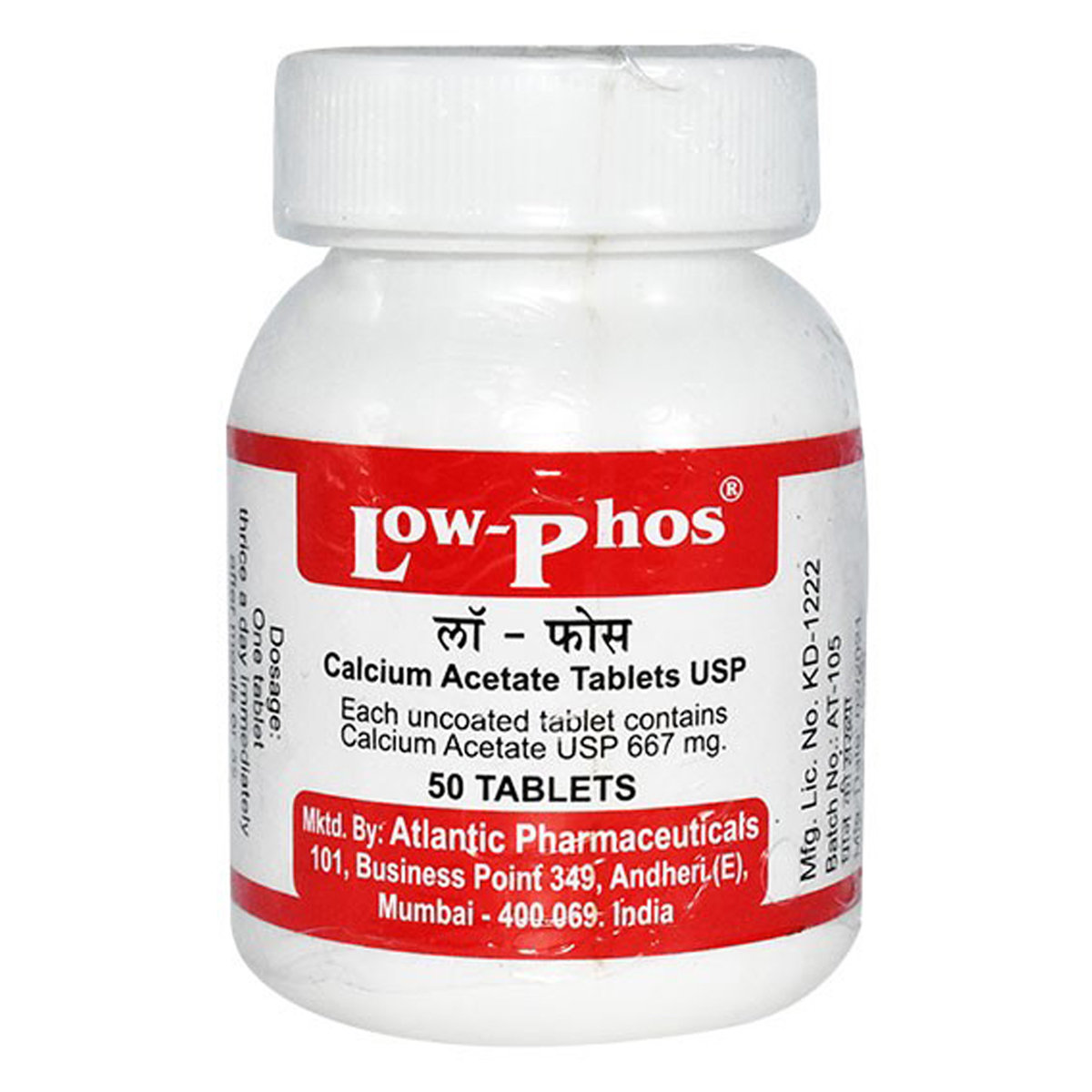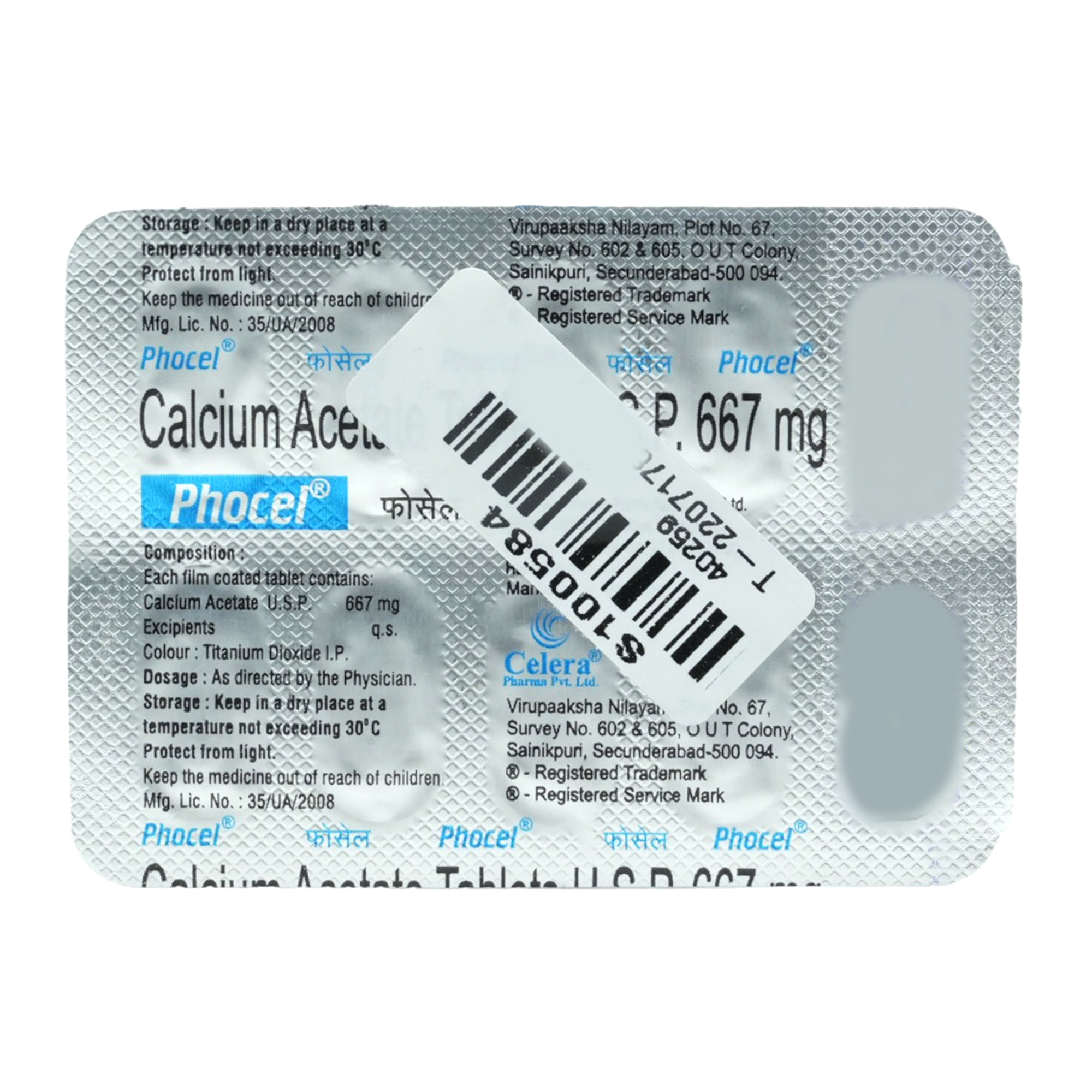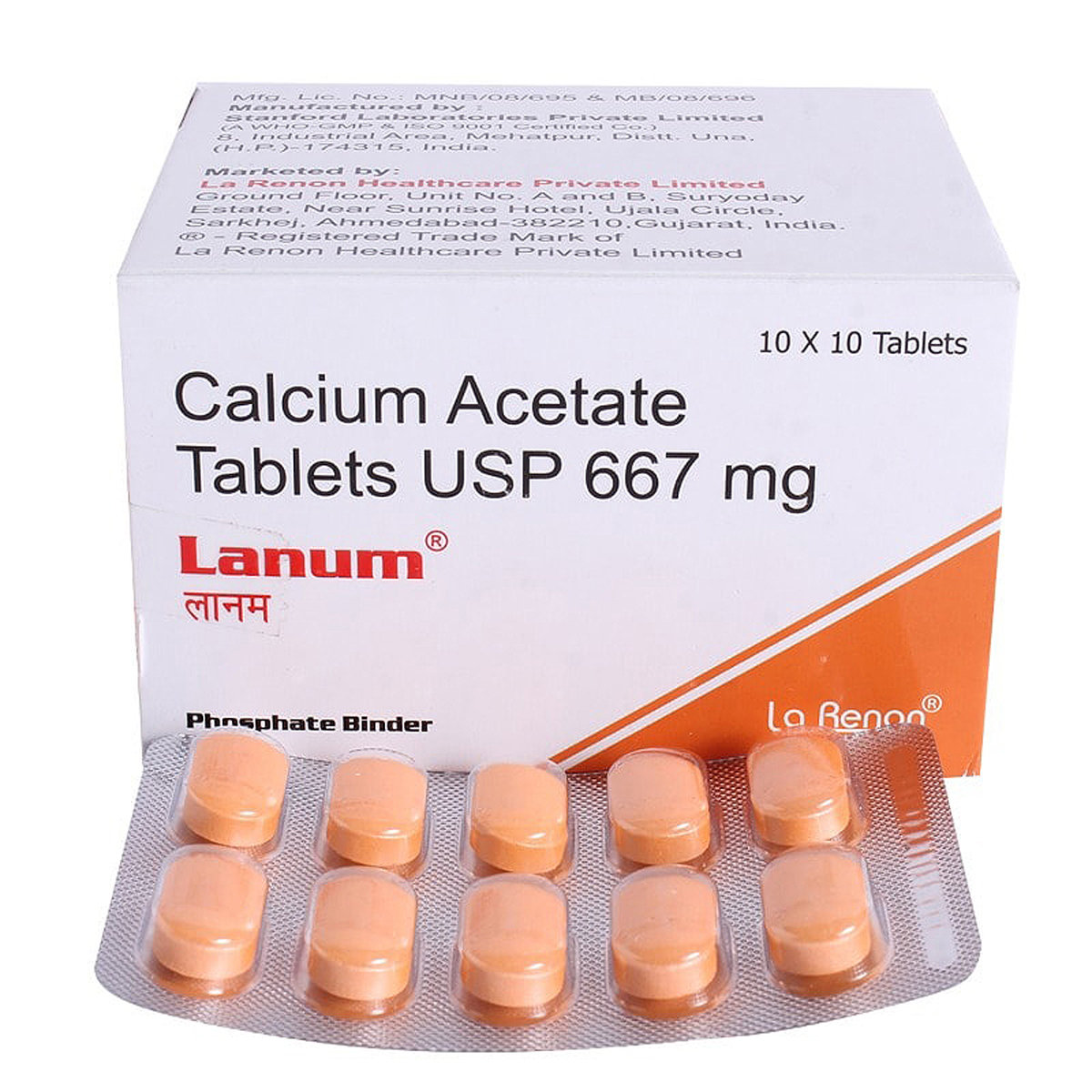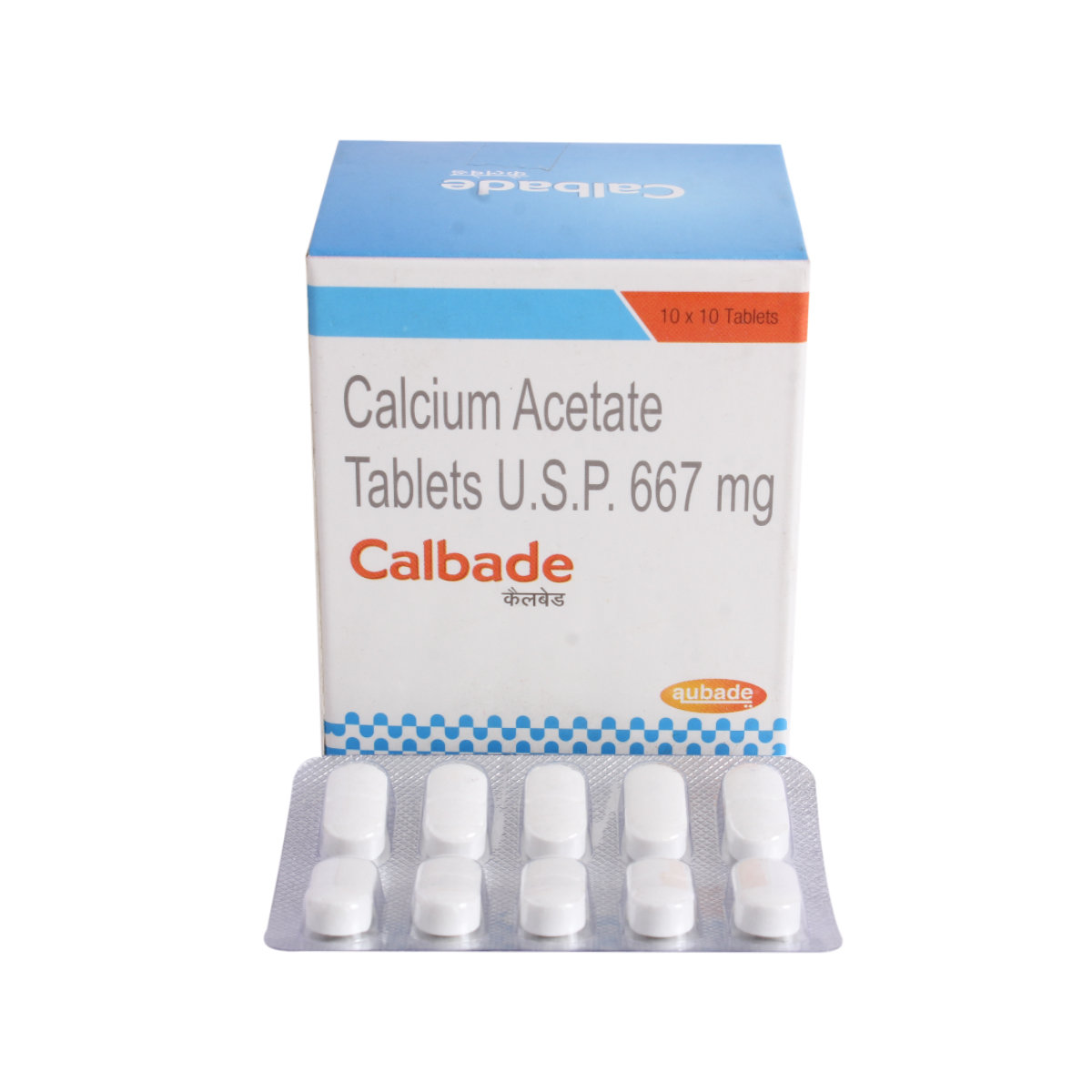Phosnier 667 Tablet


MRP ₹58
(Inclusive of all Taxes)
₹8.7 Cashback (15%)
Provide Delivery Location
Online payment accepted
 Prescription drug
Prescription drugWhats That
Composition :
Manufacturer/Marketer :
Consume Type :
Return Policy :
About Phosnier 667 Tablet
Phosnier 667 Tablet belongs to the class of medicines known as phosphate binders. It is used to control high blood levels of phosphorus in people with kidney disease who are on dialysis (medical treatment to clean the blood when the kidneys are not working properly). High phosphorus, also called hyperphosphatemia, means you have extra phosphorus in your blood.
Phosnier 667 Tablet contains calcium acetate, which works by binding phosphorus that you get from foods in your diet and prevents it from being absorbed into your bloodstream.
Use Phosnier 667 Tablet as advised by your doctor. You may experience nausea (feeling sick) or vomiting (being sick), constipation and diarrhoea. Most of these side effects do not require medical attention and gradually resolve over time. However, if the side effects persist, contact your doctor.
Before taking Phosnier 667 Tablet, let your doctor know if you are allergic to any ingredient of it. Inform your doctor before taking Phosnier 667 Tablet if you are pregnant, planning to become pregnant, or breastfeeding if you have lactose intolerance, have high levels of calcium in your blood or urine, or have low levels of phosphate in your blood. It is recommended not to consume alcohol while on treatment with this medicine. Inform your doctor about your medical history and other medications you are currently taking to rule out any potential negative effects.
Uses of Phosnier 667 Tablet
Directions for Use
Key Benefits
Phosnier 667 Tablet belongs to the class of medicines known as phosphate binders. It contains calcium acetate. It is commonly used to treat kidney failure in individuals undergoing regular haemodialysis or continuous ambulatory peritoneal dialysis (CAPD). In kidney failure, the phosphate levels in the blood can be high. Phosnier 667 Tablet controls the phosphate levels by removing phosphate from the food in your stomach before it enters the bloodstream. Thus, it helps to prevent the high phosphate levels in the stream.
Storage
- Stay hydrated by drinking plenty of water.
- Avoid dairy product such as cheese, milk, yogurt and ice cream.
- Maintain healthy weight and exercise daily.
- Following a low-calcium diet can help reduce hypercalcemia symptoms.
- Inform your doctor about the nausea and discuss possible alternatives to the medication or adjustments to the dosage.
- Divide your daily food intake into smaller, more frequent meals to reduce nausea.
- Opt for bland, easily digestible foods like crackers, toast, plain rice, bananas, and applesauce.
- Avoid certain foods that can trigger nausea, such as fatty, greasy, spicy, and smelly foods.
- Drink plenty of fluids, such as water, clear broth, or electrolyte-rich beverages like coconut water or sports drinks.
- Use ginger (tea, ale, or candies) to help relieve nausea.
- Get adequate rest and also avoid strenuous activities that can worsen nausea.
- Talk to your doctor about taking anti-nausea medication if your nausea is severe.
- Record when your nausea occurs, what triggers it, and what provides relief to help you identify patterns and manage your symptoms more effectively.
- Inform Your Doctor: Notify your doctor immediately about your diarrhoea symptoms. This allows them to adjust your medication or provide guidance on managing side effects.
- Stay Hydrated: Drink plenty of fluids to replace lost water and electrolytes. Choose water, clear broth, and electrolyte-rich drinks. Avoid carbonated or caffeinated beverages to effectively rehydrate your body.
- Follow a Bland Diet: Eat easy-to-digest foods to help firm up your stool and settle your stomach. Try incorporating bananas, rice, applesauce, toast, plain crackers, and boiled vegetables into your diet.
- Avoid Trigger Foods: Steer clear of foods that can worsen diarrhoea, such as spicy, fatty, or greasy foods, high-fibre foods, and dairy products (especially if you're lactose intolerant).
- Practice Good Hygiene: Maintain good hygiene to prevent the spread of infection. To stay healthy, wash your hands frequently, clean and disinfect surfaces regularly, and avoid exchanging personal belongings with others.
- Take Anti-Diarrheal Medications: If your doctor advises, anti-diarrheal medications such as loperamide might help manage diarrhoea symptoms. Always follow your doctor's directions.
- Keep track of your diarrhoea symptoms. If they don't get better or worse or are accompanied by severe stomach pain, blood, or dehydration signs (like extreme thirst or dark urine), seek medical help.
- Preventing Vomiting (Before it Happens)
- Take medication exactly as prescribed by your doctor. This can help minimize side effects, including vomiting.
- Having a small meal before taking your medication can help reduce nausea and vomiting.
- Talk to your doctor about taking anti-nausea medication along with your prescribed medication.
- Managing Vomiting (If it Happens)
- Try taking ginger in the form of tea, ale, or candy to help alleviate nausea and vomiting.
- What to Do if Vomiting Persists
- Consult your doctor if vomiting continues or worsens, consult the doctor for guidance on adjusting your medication or additional treatment.
- Report the itching to your doctor immediately; they may need to change your medication or dosage.
- Use a cool, damp cloth on the itchy area to help soothe and calm the skin, reducing itching and inflammation.
- Keep your skin hydrated and healthy with gentle, fragrance-free moisturizers.
- Try not to scratch, as this can worsen the itching and irritate your skin.
- If your doctor prescribes, you can take oral medications or apply topical creams or ointments to help relieve itching.
- Track your itching symptoms and follow your doctor's guidance to adjust your treatment plan if needed. If the itching persists, consult your doctor for further advice.
Drug Warnings
Before taking the Phosnier 667 Tablet, inform your doctor if you are allergic to any of its ingredients. If you are pregnant, planning to become pregnant, or breastfeeding, or if you have high levels of calcium in your blood or urine or low levels of phosphate in your blood. Long-term high calcium levels in your blood may lead to a build-up of calcium in your blood vessels or soft tissues. Your blood calcium levels will be checked on a regular basis by your doctor. If your levels are too high, your dose will be lowered, or your therapy will be stopped immediately. Other medications, especially antibiotics (such as norfloxacin, ciprofloxacin, or tetracyclines), diuretics (such as thiazides), and bisphosphonates (used to treat bone problems), should not be taken with Phosnier 667 Tablet unless prescribed by a doctor.
Drug-Drug Interactions
Drug-Drug Interactions
Login/Sign Up
Co-administration of Phosnier 667 Tablet may interfere with the absorption of Demeclocycline and reduce its effectiveness.
How to manage the interaction:
Taking Phosnier 667 Tablet may interfere with the absorption of Demeclocycline and reduce its effectiveness. Therefore, Phosnier 667 Tablet and demeclocycline should not be taken orally at the same time. Maintaining a gap of 2-4 hours between both medicines is advised. Do not discontinue the medication without consulting a doctor.
Co-administration of Oxytetracycline when taken along with Phosnier 667 Tablet lowers the levels of either medication. This interaction applies to the oral forms of both medications.
How to manage the interaction:
Although taking Oxytetracycline and Phosnier 667 Tablet together can result in an interaction, it can be taken if a doctor has prescribed it. Do not stop using any medications without talking to a doctor.
Phosnier 667 Tablet may interfere with the absorption of lymecycline and reduce its effectiveness.
How to manage the interaction:
Phosnier 667 Tablet may interfere with the absorption of lymecycline and reduce its effectiveness. Although there is an interaction, Phosnier 667 Tablet can be taken with lymecycline if prescribed by the doctor.
Co-administration of Dolutegravir with Phosnier 667 Tablet can reduce the effectiveness of dolutegravir.
How to manage the interaction:
Taking Dolutegravir with Phosnier 667 Tablet together can possibly result in an interaction, they can be taken together if prescribed by your doctor. It is recommended to take dolutegravir at least two hours before or six hours after the Phosnier 667 Tablet dose. Do not discontinue any medications without consulting a doctor.
Co-administration of doxycycline with Phosnier 667 Tablet can reduce its effectiveness.
How to manage the interaction:
Although there is an interaction between Phosnier 667 Tablet and doxycycline, it can be taken together if prescribed by a doctor. It is adviced to take doxycycline 2 hrs before or 6 hours after taking Phosnier 667 Tablet. Do not stop using any medications without talking to a doctor.
Drug-Food Interactions
Drug-Food Interactions
Login/Sign Up
Diet & Lifestyle Advise
- Maintain a well-balanced and healthy diet.
- Keep your weight under control with a BMI of 19.5-24.9
- Eat low-phosphorus foods such as sourdough bread, corn or rice cereals, cream of wheat, unsalted popcorn and some light-coloured sodas & lemonade.
- Avoid high-phosphorus foods, including bran cereals, oatmeal, nuts, sunflower seeds, whole-grain bread and dark-coloured colas.
- Limit or avoid alcohol consumption.
- Quitting smoking is the best strategy to lower the risk of illness.
Side Effects of Phosnier 667 Tablet
- Nausea (feeling sick)
- Vomiting (being sick)
- Constipation
- Diarrhoea
- Rash
Habit Forming
Therapeutic Class
All Substitutes & Brand Comparisons
RX
Hypophos 677 mg Tablet 10's
Samarth Life Sciences Pvt Ltd
₹18
(₹1.62 per unit)
68% CHEAPERRX
Low Phos 667 mg Tablet 50's
Atlantic Pharmaceuticals Inc
₹117
(₹2.11 per unit)
59% CHEAPERRX
Phocel Tablet 10's
Celera Healthcare Pvt Ltd
₹33.5
(₹3.02 per unit)
42% CHEAPER
Product Substitutes
Author Details
We provide you with authentic, trustworthy and relevant information
Drug-Diseases Interactions
Drug-Diseases Interactions
Login/Sign Up
Increased serum calcium and phosphate levels that are greater than the solubility limit can cause calcium-phosphate precipitates to form in the body's vascular and renal systems as well as other soft tissues.
How to manage the interaction:
Therapy with Phosnier 667 Tablet should be administered with extreme caution in patients with hyperphosphatemia (high phosphate in blood).
The contraction of heart muscle and the transmission of electrical impulses both include calcium. Patients with heart illness should receive therapy with calcium salt formulations (especially IV) with caution.
How to manage the interaction:
Therapy with Phosnier 667 Tablet (particularly IV) should be administered cautiously to patients with cardiac disease.
Active transport and passive diffusion are both used to absorb calcium from the gastrointestinal system.
How to manage the interaction:
Malabsorption may decrease the absorption of Phosnier 667 Tablet.
Patients with sarcoidosis may occasionally experience hypercalciuria, with or without hypercalcemia.
How to manage the interaction:
Hypercalciuria (excessive urinary calcium excretion), with or without hypercalcemia (high calcium levels), may occasionally occur in patients with sarcoidosis. Therapy with Phosnier 667 Tablet should be administered cautiously and only if necessary in patients with sarcoidosis.
FAQs
Phosnier 667 Tablet controls the phosphate levels by removing phosphate from the food in your stomach before it gets into the bloodstream. Thus, it helps to prevent the high levels of phosphate in the bloodstream.
High phosphorus often does not cause symptoms itself. However, excess phosphorus in your blood can remove calcium from your bones and other body parts, resulting in low calcium (hypocalcemia). Low calcium causes symptoms such as muscle cramps, bone and joint discomfort, weak bones, and itchy skin or rash.
It is not recommended for use if you are allergic to any components present in Phosnier 667 Tablet, if you have high levels of calcium in your blood or urine, or if you have low levels of phosphate in your blood.
Doctors will test your blood phosphate level to see if you have excess phosphorus. If your phosphate level is higher than 4.5 mg/dL, your doctor may order additional tests to rule out kidney disease.
Drug-Drug Interactions Checker List
- NORFLOXACIN
- CIPROFLOXACIN
- HYDROCHLOROTHIAZIDE
- CHLORTHALIDONE
- ALENDRONATE
- RISEDRONATE
Special Advise
To rule out the possibility of electrolyte imbalance, electrolyte levels should be monitored on a regular basis.
Disease/Condition Glossary
High phosphorus or Hyperphosphatemia: High phosphorus, also called hyperphosphatemia, means you have extra phosphorus in your blood. High phosphorus is often a sign of kidney damage. High phosphorus often does not cause symptoms itself. However, excess phosphorus in your blood can remove calcium from your bones and other body parts, resulting in low calcium (hypocalcemia). Low calcium causes symptoms such as muscle cramps, bone and joint discomfort, weak bones, and itchy skin or rash.

Have a query?
Alcohol
Safe if prescribed
Avoid the consumption of alcohol as it may cause some side effects and make Phosnier 667 Tablet less effective.
Pregnancy
Consult your doctor
Phosnier 667 Tablet should not be used in pregnancy unless clearly necessary. So, inform your doctor if you are pregnant or suspect pregnancy. Your doctor will weigh the benefits and potential risks before prescribing Phosnier 667 Tablet.
Breast Feeding
Consult your doctor
Phosnier 667 Tablet should not be used in nursing mothers unless clearly necessary. Inform your doctor if you are breastfeeding. Your doctor will weigh the benefits and potential risks before prescribing Phosnier 667 Tablet.
Driving
Safe if prescribed
Phosnier 667 Tablet does not affect your ability to drive or operate machinery.
Liver
Consult your doctor
If you have liver problems, inform your doctor before taking Phosnier 667 Tablet. Your doctor may adjust the dose of this medicine based on your condition.
Kidney
Consult your doctor
If you have a pre-existing or a history of kidney condition, inform your doctor before taking Phosnier 667 Tablet. Your doctor may adjust the dose of this medicine based on your condition.
Children
Safe if prescribed
Safety and effectiveness in pediatric patients have not been established. Please consult your doctor.















